Hey there, golf enthusiasts! Ready to take your short game to the next level? Look no further than the trusty sand wedge!
In this ultimate guide, I’ll dive into the world of sand wedge loft and how it can significantly impact your performance around the greens.
So grab your favorite beverage, relax, and let’s explore the wonderful world of sand wedge loft together!
In This Post
What Is A Sand Wedge?
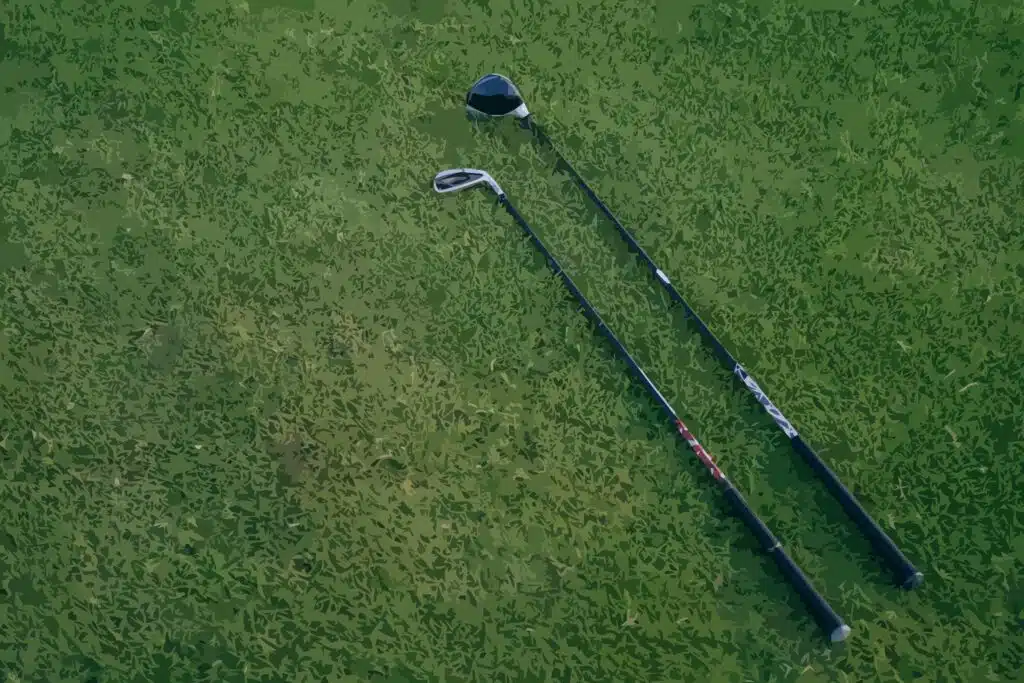
Before diving into the sand wedge loft, I want to provide an overview and its features.
The sand wedge is designed for getting the golf ball out of rough and sand traps (bunkers).
Definition
A sand wedge is a golf club with a high loft angle, typically ranging from 54 to 58 degrees. It can be used in sand bunkers or other soft ground conditions.
The primary purpose of a sand wedge is to help golfers escape from sand bunkers. The high loft angle and the club’s design enable it to generate additional spin on the ball. So it stops once it lands on the green.
Hence, I better control my shots with this wedge. Also, I can use it in other situations, such as shots from thick rough, or deep grass.
Features And Design
Let’s delve into a sand wedge’s fascinating features and design!
Firstly, I must mention its high loft angle (from 54 to 58 degrees). This loft angle helps the club lift the golf ball from the sand. So this feature prevents it from digging too deeply into the bunker.
Secondly, the design of the sand wedge is distinct, characterized by its wider and more rounded clubhead compared to other irons.
This design element minimizes the chances of the clubhead digging into the sand for a smooth glide through the bunker.
Also, this wider sole contributes to what is known as the “bounce” of the club (bounce refers to the curvature of the sole). The bounce feature facilitates smoother and cleaner shots from various bunker lies.
Thirdly, the sand wedge has a shorter shaft than other clubs in my bag (84 – 91 cm). This shorter length enhances control and precision. So, I find it easier to execute shots with finesse and accuracy.
Finally, the grooves on the clubface of a sand wedge also play a vital role in its design.
These grooves increase friction between the clubface and the golf ball for more spin to be generated. So the ball will bite into the green upon landing, stopping the ball quickly and reducing roll.
What Is A Sand Wedge Loft?

The loft of a sand wedge refers to the angle between the clubface and the vertical plane. It is the degree measurement that indicates how high the face of the club is angled. (I have a detailed article on the loft of all golf clubs that you can read here.)
The loft of a sand wedge typically ranges between 54 and 58 degrees, although it can vary slightly depending on the specific club model. I will go deeper into the range of the sand wedge loft in the following sections of this article.
Sand Wedge Loft Range
I’ve tried different angles of the sand wedge loft, and here’s how I feel about each one.
A 54-degree sand wedge is a low-loft angle wedge. This loft angle produces a lower ball flight trajectory and allows the ball to travel farther.
Thus, it is helpful in situations where I want to clear a shallow bunker or when playing in firm sand conditions.
On the other hand, 58 degrees is a high loft. This higher loft angle results in a higher ball flight trajectory with increased spin and a softer landing on the green. So it is ideal when faced with deep bunkers and sand conditions.
Some golfers prefer a sand wedge with a loft angle of 56 or 57 degrees as a middle ground because it provides distance and control.
Importance Of Sand Wedge Loft

Here’s the deal with the sand wedge loft. It’s pretty vital for us golfers. Let me break it down for you:
Ball flight control
The loft of a sand wedge can control the golf ball’s trajectory. I can adjust the ball’s launch angle and spin rate. Then, I can execute shots with the desired height and distance.
Bunker shots
No one wants to get stuck in the sand, right? When it comes to bunkers, sand wedge loft is my best friend. That high loft angle helps me get the ball out of those pesky sand traps.
Versatility
Sand wedges offer versatility in shot selection. Depending on the loft angle, I can use a sand wedge for various shots, not just in sand bunkers.
Thick rough? No problem. Deep grass? I got it. Need a high shot with a short distance? The sand wedge can handle it. It’s like my go-to tool for all kinds of tricky situations.
Distance control
A higher loft angle tends to result in a shorter carry distance. Thus, it is ideal for shots where I need to control the ball’s flight and land it softly on the green.
I can optimize my distance control and adapt to varying shot scenarios with different loft options available. Sometimes I want a shorter distance, and other times I need more oomph. The sand wedge gives me that control.
So, there you have it. Sand wedge loft is pretty darn important. It will help you control the ball flight, escape from bunkers, generate spin, be versatile, and nail those short game shots. It’s like a trusty sidekick on the golf course.
What Degree Sand Wedge Should You Carry?

For newbies, choosing a sand wedge loft will be very difficult. Thus, I give you detailed instructions so you can start your golf journey more easily with the right sand wedge.
Skill Level
When picking the degree of your sand wedge, it’s essential to consider your skill level. Trust me, because it can make a big difference in your game.
If you’re a beginner or have a higher handicap, I’d suggest going for a sand wedge with a higher degree, like 58 degrees. The extra loft will help you get the ball out of those bunkers and give you a better chance of landing it on the green.
But if you’re more experienced or have a lower handicap, you might want to consider a sand wedge with a lower degree, around 54 or 56 degrees. It will give you more control and allow you to play different shots with varying trajectories.
Swing Speed

Let’s talk about choosing the degree of your sand wedge based on your swing speed. Swing speed matters, and I’ve got some advice to help you.
If your swing speed is slow, like around 70-80 mph, going for a 58-degree sand wedge could be a smart move. It will help you get the ball up in the air easier.
On the other hand, if you’ve got a faster swing speed, say around 90-100 mph or more, you might want to check out a lower-degree sand wedge.
Course Conditions
The next factor to consider when choosing the right degree sand wedge for your game is course conditions.
For me, if I play on a course with softer sand or fluffy rough, I’ll go for a sand wedge at 58 degrees to get the ball up quickly and land it softly.
On the flip side, if I play on a course with firmer sand or tight lies, I will consider a 54-or-56-degree sand wedge. That way, I can still control the ball and get those crisp shots on target.
Shot Preferences
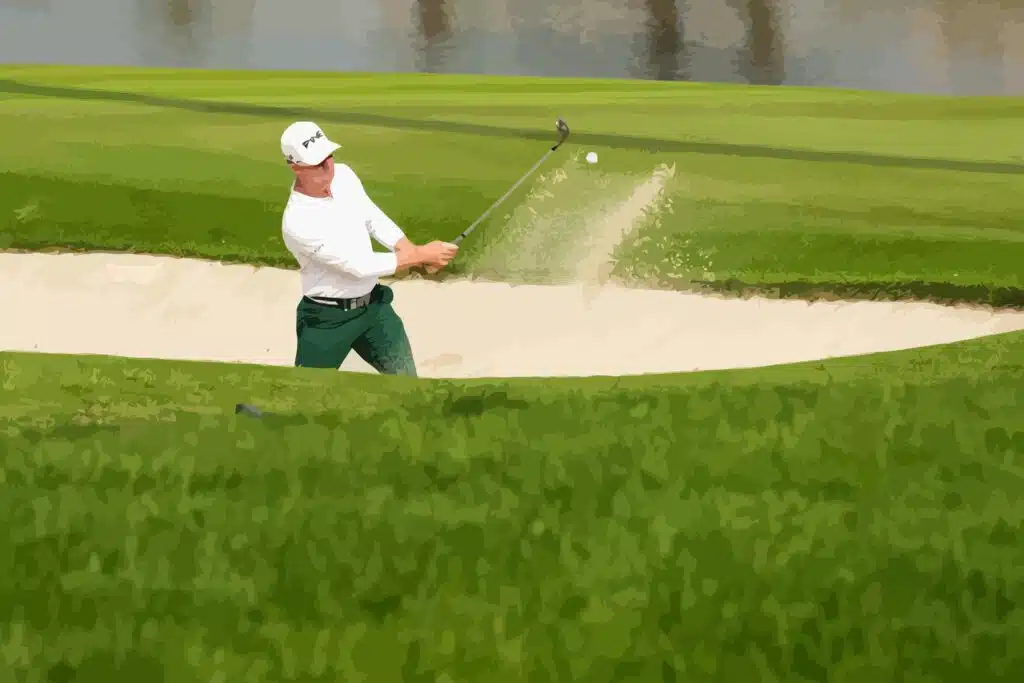
Shot preferences are about how you like to play your shots, so listen up!
I consider the shot types I like to hit around the green when looking at my preferences. I’m a fan of high, lofty shots fan that lands softly, so I lean toward a 58-degree sand wedge.
But if you prefer a more punchy, lower trajectory shot that rolls out a bit more, I recommend a lower-degree sand wedge. It will help you keep the ball lower and get that extra distance.
Your Other Wedges
Finally, I recommend considering how the loft of your gap wedge or pitching wedge relates to your sand wedge. Here is my advice:
If you have a pitching wedge with a specific loft, around 46 degrees, and you’re thinking of getting a sand wedge, focus on the loft of your pitching wedge.
If there’s a significant gap between the two clubs, like 12 degrees or more, consider adjusting the loft of your sand wedge accordingly.
For example, if your pitching wedge has a loft of 46 degrees and your sand wedge has a loft of 58 degrees, that’s a big difference. In this case, I recommend looking for an option that fills the gap better, maybe around 54 or 56 degrees.
However, if the loft gap between your pitching wedge and the sand wedge is already suitable, you may not need to make any changes.
Remember, it’s all about finding the loft progression that works best for you and helps you cover different distances and shot types.
Note that there’s no one-size-fits-all answer here. So, take your time, experiment a bit, and find that sweet spot in your wedge setup.
When Not To Use A Sand Wedge?

In some situations, reaching for your trusty sand wedge might not be the best move. Here’s my advice on when to consider leaving that sand wedge in the bag:
Firstly, when you’re faced with a shot that requires a lot of roll and distance, like a long chip or pitch shot, it might be better to opt for a club with less loft.
The sand wedge is designed to help you deal with bunkers and hit those high, soft shots. So using it for long shots might not give you the desired outcome.
Similarly, a sand wedge might not be the best choice when you have to work with a lot of green and want to hit a bump-and-run shot.
In such cases, the ball lands low and rolls out. Thus, consider a club with less loft, like a pitching wedge or even a 9-iron, to keep the ball running smoothly.
Besides, if you must keep the ball low to navigate under tree branches or deal with strong winds, a sand wedge would launch the ball too high. Also, it might not give you the control you need.
In this case, choosing a lower lofted club will help you keep the ball flight down and maintain better control over the shot.
Lastly, I recommend not using it when you find yourself on the fairway with a long approach shot. Instead, consider using a higher-lofted iron or hybrid to get your distance.
Common Sand Wedge Mistakes
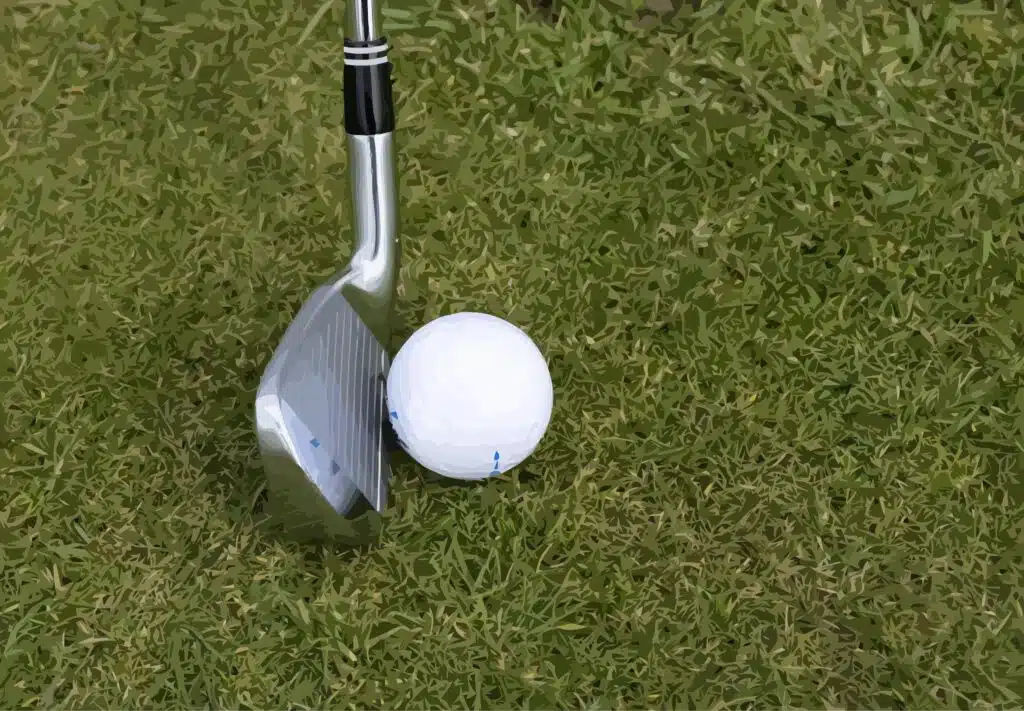
Here are some common sand wedge mistakes to watch out for when you’re out on the course:
- Gripping too tightly: One common mistake I see is gripping the sand wedge too tightly. This mistake can restrict your swing.
- Incorrect ball position: Placing the ball too far back or forward in your stance can lead to inconsistent shots. It’s best to position the ball slightly forward or center.
- Lack of clubface open: Some players forget to open the face enough. Hence, shots won’t get enough height or fail to stop on the green.
- Not using enough lower body rotation: Many golfers make the mistake of relying solely on their arms, leading to weak and inconsistent shots. Thus, remember to rotate your hips and transfer your weight for better results.
- Over-swinging: Trying to hit the ball too hard or making an overly aggressive swing can lead to inconsistent results. I recommend focusing on maintaining a smooth and controlled swing tempo.
Remember, mistakes are part of the learning process. So, stay relaxed, have fun, and keep working on your game!
Who Should Carry A Sand Wedge?
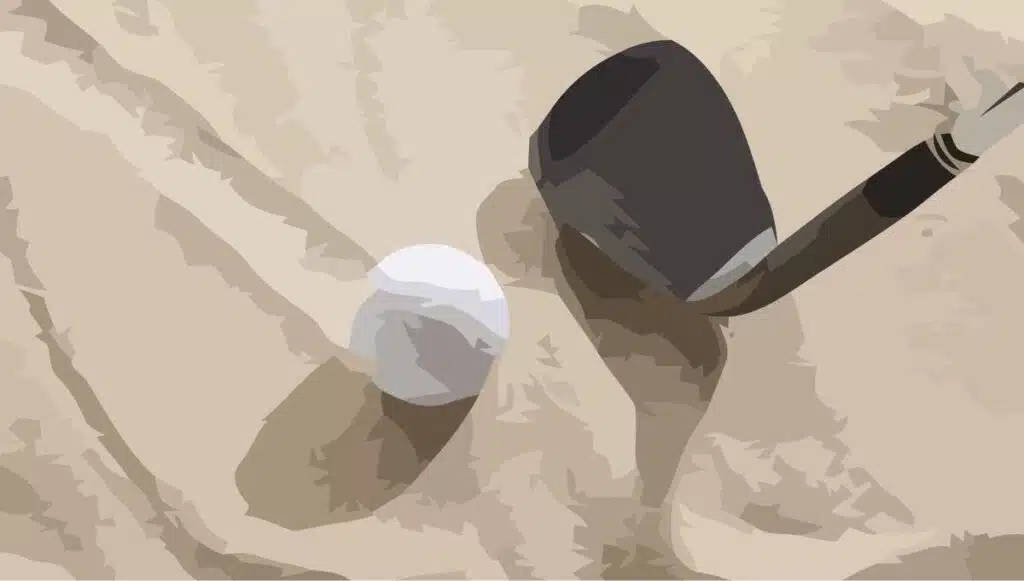
The sand wedge is a versatile club designed to help navigate those pesky sand traps and execute delicate shots around the greens. But who exactly should carry a sand wedge? Let’s break it down for different skill levels.
Lower Handicappers
Lower handicappers, you’re no strangers to finesse and precision on the golf course. Carrying a sand wedge is a no-brainer for you.
With your skills and control, the sand wedge becomes a valuable asset in your short-game arsenal. It provides the loft and spin necessary to execute those delicate flop shots, high soft pitches, and bunker escapes confidently.
Besides, you often find yourself closer to the green with accurate approach shots. The sand wedge becomes your go-to club for those scoring opportunities. It allows you to hit precise shots from various lies.
Mid Handicappers
As a mid handicapper, you’re working on your short game and gaining more confidence around the greens.
The sand wedge provides the loft and control needed to execute various shots. It helps you navigate bunkers effectively, get the ball high in the air for those soft landings, and control the spin on your approach shots.
High Handicappers
High handicappers, don’t underestimate the value of a sand wedge in your bag! While you may struggle with consistency and accuracy, the sand wedge can be a game-changer for your short game.
The sand wedge simplifies your short game by providing more forgiveness on those delicate shots. It can help you achieve better distance control and improve your ability to get the ball closer to the pin.
Who Shouldn’t Carry A Sand Wedge?
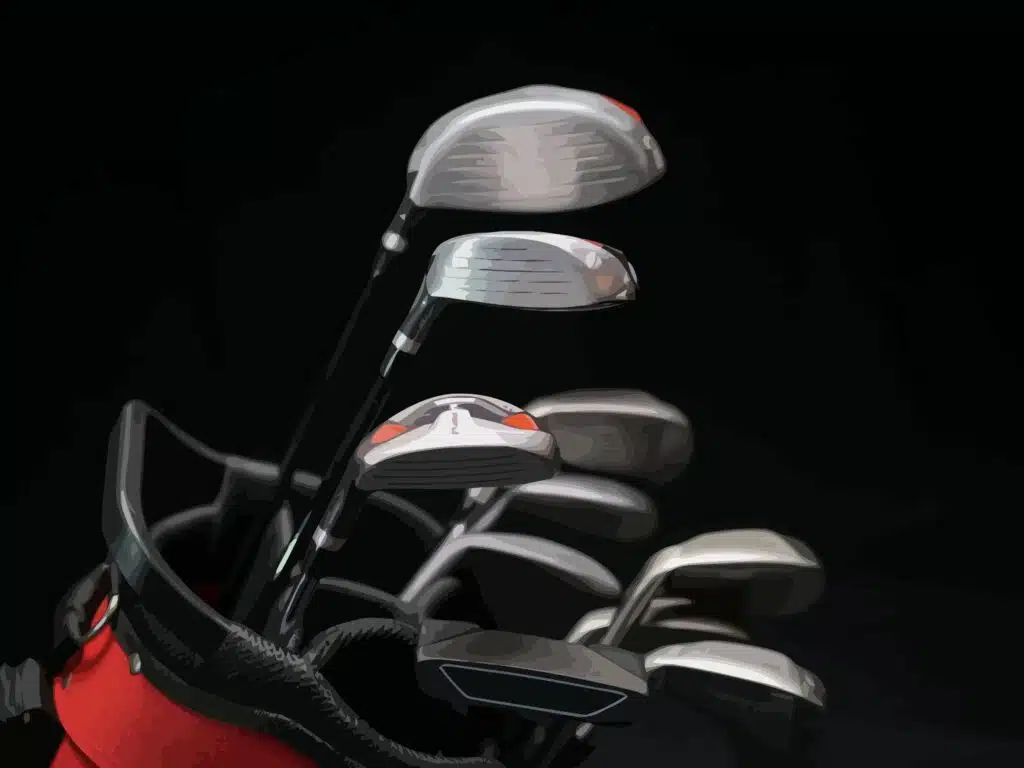
If you find yourself skulling, chunking, or shanking your sand wedge shots every time you bring it out, it might be a sign that this club isn’t the best fit for you.
Skulling occurs when you contact the ball using the club’s leading edge, resulting in shots that fly too low and shoot past the target.
On the other hand, chunking happens when you hit the ground before the ball, leading to shots that fall short and lack distance.
And we can’t forget about the dreaded shanks, where the ball veers off uncontrollably due to an off-center hit.
FAQs
What Is The Difference Between An A Wedge And A Sand Wedge?
The main difference is their loft. An A wedge typically has a higher loft, ranging from 50 to 52 degrees, while a sand wedge has a loft ranging from 54 to 58 degrees.
Should You Use A Sand Wedge In The Rough?
The answer is yes. The sand wedge’s design with a wide sole and higher loft makes it suitable for extracting the ball from the rough.
Do I Need Both a Pitching Wedge And a Sand Wedge?
It depends. The pitching wedge is typically used for fuller shots and longer approach shots. Meanwhile, the sand wedge is specialized for shots around the greens and out of bunkers.
Some golfers carry both to cover a wide range of shots, while others may prefer one or the other based on their game.
Can A 50 Degree Wedge Be A Sand Wedge?
No. A 50-degree wedge may not provide the same level of performance as a dedicated sand wedge.
Is A Sand Wedge The Same As A 56?
A sand wedge is commonly associated with a loft of 56 degrees, although it can vary slightly between 54 and 58 degrees depending on the specific club model and manufacturer.
Conclusion
And there you have it, my fellow golfers! We’ve reached the end of my ultimate guide to sand wedge loft and its impact on your short game.
I’ve covered everything from understanding loft degrees to considering various factors when choosing the right sand wedge for your game.
Remember, practice makes perfect, so head to the practice green and experiment with different shots and techniques!

